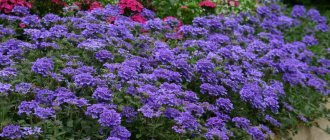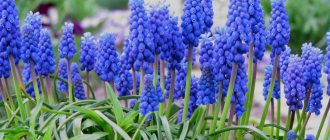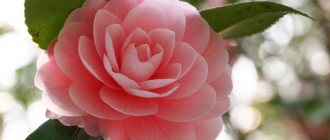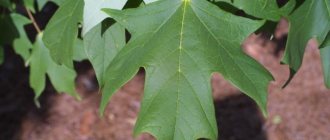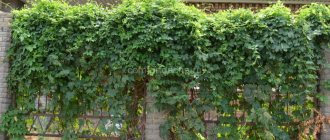An apartment immersed in greenery looks attractive and cozy, and the plants that allow not only the window sills, but also the walls to turn green are vines. Writhing, overgrown cascades of leaves, often covering an entire wall or entwining plant pots suspended from the ceiling, create spectacular decoration and coziness. While vines are attractive, they are often quite easy to care for as they do not have too many growing requirements. We present the most popular and easy-to-grow climbing indoor plants - photos and names, with brief descriptions.
general characteristics
Climbing plants are not only beautiful, but also practical, because with their help you can shade certain areas of the room. Lianas are unpretentious in care, do not require special conditions and grow easily with virtually no human intervention. Most indoor vines are perennial and evergreen, with vigorous growth. Some varieties of quamoclite can grow up to 2 m per season. Mostly they have flexible herbaceous stems, but there are also vines that become woody with age. Another feature of different species is the method of attachment to the surface: climbing or tendril-bearing ones entwine the support with lateral shoots, and root-climbing ones with roots. Climbing plants are more often grown in houses and apartments - they are more decorative, aesthetically pleasing and form graceful spirals.
Clerodendrum
Clerodendrum is a shrub with long climbing stems that can grow over 4 m in length. The leaves are oval, with a somewhat wrinkled surface and pronounced veins.
Both stems and leaf blades are covered with short hairs. They are valued for their very beautiful inflorescences , varied for different species.
Care is quite complicated , the plant requires good lighting throughout the day, high air humidity, and a certain temperature.
A little about climbing plants in the apartment
Such crops have a decorative appearance, which is why gardeners love them. One of their characteristic features is their flexible long stems, which help them wrap around supports or spread across surfaces, creating interesting structures.
Thanks to this feature, they are often planted in flowerpots and hanging structures. You can also place supports around them. With their help, you can enliven the interior, decorate the walls, and fill empty corners in the room. They are perfect for creating vertical gardening in an apartment.
Many of them are not capricious to care for, but not all of them; for example, begonia is quite capricious and is best grown at home by an experienced gardener. Hanging flowers and vines can grow in shaded corners of the house and close to windows. At the same time, plants with green leaves are more adapted to the shade than those crops that have white spots or veins on the leaf blades.
Lianas with large leaves
Creepers with large leaves look especially impressive, which is why they are more popular and are often used to decorate room interiors.
Syngonium
The first representative of the ampelous syngonium. The shape of its leaves changes from pointed to broad-leaved as it grows. The color range of foliage can range from green to white, because syngonium has a wide variety of varieties.
Grows up to one and a half meters. It is better to place the flower in a well-lit area with regular watering.
Monstera
Monstera is a large-leaved flower. A real giant, reaches up to 3 m in height, with shiny leaves of a dark emerald color, with cuts up to the middle.
It prefers to grow in illuminated places, but strong lighting can damage the leaves, leaving burns on them.
Philodendron
Climbing philodendron beautifully plants walls with leaf blades 10 cm long. To add fluffiness, it is recommended to carefully pinch off the tops.
To grow, the soil in the pot should always be kept moist, and its location should be on the sunny side.
Peculiarities
When arranging their home interior, many people choose attractive climbing plantings. They are placed in light hanging vases or baskets, often using special supporting parts that are necessary for hanging shoots.
One of the main features of climbing plants is their decorative effect. With their help you can decorate any interior. Thanks to the beautiful climbing plantings, the environment becomes more lively and colorful. The plants in question are wonderful specimens for beautiful vertical gardening.
Climbing plants are distinguished not only by their spectacular appearance, but also by their unpretentiousness. Most varieties do not require complex care, so even novice gardeners can easily cope with their cultivation. Of course, there are exceptions to this rule. For example, the same begonia cannot be called a non-capricious plant.
The green pets in question can grow both in partial shade and surrounded by bright light.
However, in all cases it is necessary to take into account the characteristics of a certain species, the cultivation of which you are interested in.
Most of the charming house vines are perennial and evergreen. Many of them can boast of intensive growth, to the delight of gardeners. Certain varieties can reach a significant height of 2 m during the season. As a rule, they all have flexible and herbaceous stems, but there are also types of indoor vines that become woody over time.
Another important feature of indoor vines is the method of attachment to base surfaces. Climbing or tendril-bearing plants entwine the supporting part with their shoots, and root-climbing plants with their roots. Of course, climbing varieties are most often found in homes because they look pretty and expressive.
As mentioned above, climbing plants do not require special care, however, many users find it difficult to water them. This problem is due to the fact that the plants in question are usually located at a significant height , and water very often flows directly onto the floor. To prevent floor coverings from becoming deformed by accumulated puddles, flower growers place rubber caps and bags on the bottom. These products can be easily removed an hour after the climbing plant is watered.
When planning to acquire such ornamental plants, you should take into account one more important feature of them - most of them are moisture-loving . We must not forget about watering the bindweeds. It is important to spray their leaves in a timely manner, especially when the weather is hot and dry.
Flowering hanging plants
Climbing plants do not always have decorative unusual leaves. Such buds fit into the interior, complement it and make it play with new colors. Most often they are used to give a decorative look to shelves, windows, shelves and other standing objects.
Stephanotis
This is a large vine, stretching up to five meters in length. It has decorative flowers that are collected in inflorescences. Their shades vary from white to purple. The vine needs a lot of space to grow, and in winter it requires artificial light.
Characteristic
One of the largest varieties of vines. Is in bloom. An adult specimen can grow to a height of 5 m. Otherwise, this crop is called Madagascar jasmine. The flower blooms with charming flowers that resemble miniature crowns, collected in inflorescences.
The color of stephanotis flowers varies. There are specimens ranging from white-cream to lavender shades. This species grows quickly, branches well and richly, so you will need to allocate sufficient free space for it at home, where it will not be cramped. At the same time, the territory should not only be spacious, but also well lit - in such conditions the stephanotis will be as comfortable as possible.
When winter comes, it is recommended to supplement the flower with lighting, since it will need longer daylight hours.
The second name of stephanotis is “Madagascar jasmine”
“Madagascar jasmine” or stephanotis grows quickly, its height can reach five meters, so it is advisable to immediately give it more well-lit space, and in winter it will require additional lighting.
Bunches of flowers are mostly of a delicate light color in bed cream tones.
Hoya
People often talk about this crop by calling it wax ivy. Hoya has star-shaped flowers and stretches up to three meters. The flowering period is up to several months. It is recommended to grow it on a western or eastern window. Wax ivy requires plenty of watering. It is not recommended to move the container with the plant to another location or rotate it.
Important!
Hoya can bloom from June to October, and the inflorescences remain decorative for up to three weeks
Hoya fleshy is an ornamental plant from the group of succulents. It is also called wax ivy or weeping vine due to the nectar dripping from the flowers. The plant has rather large, succulent, oval-shaped leaves. The flowers are white, dense, waxy, about 1 cm in diameter.
Rooms with windows facing east or west are most suitable for hoya. It adapts perfectly to both dry and humid climates. Tolerates temperature changes well. In summer it needs to be fed with phosphorus fertilizer and watered more often. In winter, it is enough to moisten the soil once a week. During the flowering period, it is strongly recommended not to move the pot with the plant to another place.
The aroma of flowers can be dangerous for people suffering from allergies, especially hay fever. Before choosing this plant, you should consult your doctor.
Clerodendrum
A flowering vine that looks elegant and graceful. The country of origin of this plant is Japan. The handsome clerodendrum is distinguished by its purple terry clusters of inflorescences. In addition, the flower in question exudes an unobtrusive but very pleasant aroma that many people like.
Clerodendrum needs the utmost care and proper care. It will need to be regularly formed and suitable fertilizing applied. Clerodendrum also needs fresh air for healthy and active growth.
A flower that was grown from cuttings can bloom successfully until the autumn season, decorating almost any environment.
Volkameria is the second name of clerodendrum
Volcameria, from the verbena family. The most popular is the beautiful climbing plant Clerodendrum fragrant . His homeland is Japan. Clerodendrum has red-purple double flowers collected in clusters. The plant prefers a sunny location and fresh air. In the summer, it needs abundant watering, otherwise the plant's leaves begin to fall off.
Clerodendrum propagates by cuttings in spring.
Plants grown from cuttings bloom until autumn. They must be replanted annually in a turf-peat mixture mixed with sand. In the summer, clerodendrum needs to be sprayed and fed. Clerodendrum can be given a beautiful shape by straightening its stems on trellises.
Clerodendrum Thompson. Care
Clerodendrum shoots must be regularly cut to two-thirds of their length - this stimulates flowering
Clerodendrum Thompson is a fast-growing woody vine with flexible, slightly curly stems, called by gardeners the “tree of destiny.” Leaves of an emerald hue with distinct veins are attached to short petioles. Beautiful flowers bloom in spring and autumn and delight the eye for quite a long time. The bract looks like a lantern, and the corolla looks like a butterfly. After flowering, orange berries appear.
The plant should be placed near windows facing south or southeast. It is hardy and grows well in conditions that mimic its natural habitat:
- needs bright diffused lighting;
- the optimal temperature in the warm months is +20–25°C, in the winter – about +14°C;
- Regular spraying and watering are required;
- The plant cannot be kept near a hot radiator;
- When planting, you need to choose soil with the addition of river sand.
Morning glory tricolor
At home, morning glory can grow for up to several years, and when planted in open ground it is an annual. Morning glory has a lush crown and beautiful blue flowers. This crop does not like moisture deficiency and when its leaves are burned by the scorching rays of the sun.
Tradescantia
Tradescantia is found in almost every gardener. Its silvery leaves with fine fluff can be found on almost every window. Small white buds, unfortunately, do not bloom for long.
Tradescantia silomantana is a variety with purple inflorescences and leaves. To grow Tradescantia, you don’t need much effort: water it abundantly, but do not over-moisten the soil, and find a well-lit place for it.
Indoor vines are generally unpretentious and do not require special care. Very versatile for room decoration, wall and window decoration, perfect for home and office.
- Provide the necessary lighting for each variety.
- Fresh air is necessary to prevent pollution and parasites.
- Fertilize on time.
- When watering the soil, do not overdo it; a large amount of moisture will most likely cause rotting of the roots. When watering, try not to wet the shoots at the base.
- As it grows, replant; the roots in a small pot may be crowded, which will affect the condition of the shoots.
By following all the rules of care, you will grow climbing indoor plants as a wonderful additional decoration for your interior.
Passionflower
This is an evergreen climbing indoor plant with unusual flowers. Its flowering continues from mid-summer to October. It is best to grow passionflower on the south side so that the crop has enough light. She doesn't like it when the room is hot and stuffy. In summer it is recommended to place it on a balcony or terrace. You need to make sure that in winter the temperature in the room does not drop below 15 degrees. Otherwise, the plant may die. In addition, passionflower requires constant spraying and showering. Once a year, the flower is pruned for more intensive growth.
Among the capricious climbing indoor plants, also noted are clerodendron, bougainvillea, etc. All of them look impressive, but they lose their properties and even die in direct sunlight or in dry indoor air.
Begonia convolvulus
There are about 130 species of ornamental begonias
Begonia convolvulus is a herbaceous plant with light and dark green shiny leaves and white flowers, brought from Brazil. Its bare, fleshy shoots reach 1.5–2 m. This is a good option for a climbing plant for hanging gardening, arches, openings, balcony trellises, and ladders. Begonias are also used to decorate trellises.
Climbing begonia, like other varieties of this plant, does not like direct sunlight. It is unpretentious, but prefers fairly high humidity. To place begonias in an apartment, it is better to choose windows facing northeast or northwest. Blooms from January to April. Reproduction occurs by stem cuttings.
Mühlenbeckia tangled
Depending on the growing conditions, the size of muhlenbeckia can vary from 15 cm to 1 m in height
Mühlenbeckia is a perennial plant from the buckwheat family. Its thin brown branches are tightly intertwined. The flowers are tiny, but it is not they that are of decorative value, but the small oval leaves. The dark green color of the foliage is diluted by a reddish tint along the edges and along the veins.
The liana can grow in warm and cool conditions; it prefers semi-shaded places to bright light. Direct rays of the hot midday sun can kill the plant. It is also advisable to avoid temperature changes and drafts.
You only need to carefully monitor the humidity of the substrate: it is necessary to adhere to the golden mean between too much dampness and dryness. Dry air in apartments with central heating does not cause discomfort to muhlenbeckia; it can rarely be sprayed.
Passionflower or passion flower
Passionflower or passionflower is a beautiful flowering climbing shrub.
Much appreciated for its attractive brightly colored flowers. They are large in size - about 10 cm in diameter, and exude a fragrant aroma.
They consist of 5 petals of one color and a crown of threads of a different color. In addition, there are bracts, stamens and perianths. At the end of flowering, berries are formed. The fruits of some species are eaten .
They require good lighting throughout the year and fairly high temperatures in winter. Not recommended for beginner gardeners, as they are quite difficult to care for.
If you want to have a marsh plant of the araceae family at home, read the recommendations of gardeners in our article.
But our material will tell you how to care for indoor primrose flowers.
Find out the secrets for caring for Schlumbergera at home at the link:
Landing. General rules
If you purchased a home vine in a temporary pot, then within 2 weeks it will definitely need to be transplanted to the main place. To do this, you can simply roll over the earthen ball along with the plant itself, so as not to cause injury to the rhizome of the vine . When carrying out this work, you should try to hold the pet in such a way as not to accidentally break the shoots. It is recommended to replant indoor vines with an assistant - it will be easier and more convenient.
When planting the crop in question, it is important to take care of the drainage of fertile soil. Ordinary expanded clay is perfect for this, thanks to which the plant will receive moisture evenly. While the plant is small, the pot for it can also be compact, but as it grows, you will have to buy a more spacious “home” for the vine.
When planting decorative loaches at home, you should take care of high-quality and reliable supports. Without them, an actively growing plant will not hold its shape and frame certain surfaces.
Various parts are used as support, for example, a moss stick - there are a lot of options.
General care recommendations
Climbing indoor plants are not particularly picky about their conditions. But when growing them, you should remember a number of subtleties and rules in order to create comfortable conditions for their living. Flowers and vines are placed so that their leaves do not touch each other. Most of them do not require much light, so their pots and vases can be placed in dark corners of the room.
Canopy plants love a lot of moisture, so they should be watered often. They often require moisture from a spray bottle, because many crops are native to the tropics, where it is always humid. Such measures will preserve the lush greenery of the bush and prevent the leaves from withering.
During the dormant period, the ampels are watered less frequently, but they should not be allowed to dry out. Water the plant every time the top layer of soil dries out.
To prevent water from spilling onto the floor, it is recommended to wear a shower cap on the bottom of the pot. An hour after watering it can be removed. During this time, all the necessary moisture will already be absorbed into the soil. You can water the plant not with water, but simply place pieces of ice on the ground. It will melt gradually and begin to saturate the substrate with moisture. You can remove excess water using tea bags, which are placed in a tray.
Philodendron climbing
Climbing Philodendron (Philodendron hederaceum) has an annual growth of 1 m. But this is not the only thing that distinguishes the unique species of philodendrons from its relatives. But the most important thing. It is for its rapid growth that the vine is valued all over the world. But the speed of development allows plants to be kept indoors only up to a certain age and size.
The long shoots of climbing philodendron are almost invisible behind the huge, showy forest green leaves. Widely heart-shaped and leathery, they quickly double in size and appear as luxurious scutes.
Philodendron needs coarse, special soil containing peat, bark, and sphagnum. The decorative effect of leaves directly depends on the quality of fertilizing and stable air humidity. But this vine does not have a dormant period.
Climbing Philodendron (Philodendron hederaceum). © plantsandpondering
Rules of care
Climbing indoor plants need proper care. It is necessary to provide flowers with optimal conditions for healthy growth. Let’s look point by point at how to provide this culture with a better living environment.
Temperature
The main percentage of climbers comes from the hot tropics, which is why climbers love warm climates with high humidity. But vines tolerate frost very poorly. It is important to ensure that in winter the temperature does not fall below 16 degrees, and in summer does not exceed 21 degrees. If you turn on the heater or air conditioner, do not do so near the flower.
Lighting
Most varieties of indoor vines do well in light partial shade. In direct sunlight, noticeable burns may appear on the flowers. From time to time, flowerpots and flowerpots with vines need to be rotated. This is necessary to ensure that the pet receives enough lighting from all sides. Otherwise, the vine runs the risk of stretching in one direction and remaining deformed.
Watering
Climbing indoor plants need regular watering and spraying. You can save a flower from hot weather if you use cool water and moisten the planting at least a couple of times a day. It is advisable to water the vines either in the morning or in the evening. In the middle of the day, when the sun is especially active, it is better not to do this.
Watering the flowerpot should be done as the soil in it dries.
But here it is important not to overdo it, since under layers of thick and good-quality foliage the earth will retain moisture for a long time.
Fertilizers and fertilizing
For indoor vines, light, fertile neutral soil or special ready-made mixtures are well suited. The faster a flower grows, the more it needs feeding: this way the leaves will be thick and juicy. Complex mineral fertilizers or organic matter diluted with water are quite suitable.
Trimming
In order for indoor vines to always remain beautiful and tidy, they must be correctly placed on supports and periodically trimmed. For example, in order for the central branch to grow long and strong, it must be gradually braided around a round support and fixed. And in order for the vine to become large and fluffy, new branches are pinched to the apical shoot to form lateral shoots.
Transplantation
When the flower stops growing, the roots begin to peek out of the pot, the leaves turn yellow, the inflorescences become small and quickly fall off, then it’s time to replant it. It is best to carry out the procedure in the spring months, when flowers enter the period of active vegetative growth. You should not carry out such manipulations during flowering.
It is recommended to replant the ampels every year, and it is better to take the container two to three centimeters larger than the old one. The plant is tilted together with the pot and the walls of the container are tapped so that the earthen lump comes away from them. Then you should pull it out and cut off the small lateral and intertwined layers.
Roots that are too thick are also cut off if they are rotten. A drainage layer of sand or pebbles about a centimeter high is poured onto the bottom of the new container. The flower is placed in a new pot and soil is poured. The ampel must be held at this moment so as not to damage it. The root collar is placed so that it is slightly below the edge of the container.
The growth of the plant depends on how compacted the soil is. If you want the flower to grow actively, the substrate is not compacted. In order for the flower to quickly begin to form buds, the soil, on the contrary, becomes compacted. After transplanting, the ampel needs to be watered abundantly and placed in the shade for several days so that it adapts and takes root.
Stephanotis
Stephanotis is a lush shrub with long climbing shoots. It belongs to beautifully flowering plants, thanks to its bright white flowers, collected in small groups.
In addition to their beauty, the inflorescences have a pleasant, delicate aroma . Flowering is abundant and long lasting throughout the summer.
The main difficulty in growing is the need for bright, full lighting.
In addition, stephanotis is picky about air temperature and needs daily spraying and regular watering.
Formation of domestic climbing plants
One of the important points in maintaining indoor vines is their correct formation and location. Although most plants are capable of weaving around nearby supports on their own, human intervention in this process will not hurt. If you want to get a long central branch, you need to braid it around a round post as it grows and fix it. It is possible to fluff up the vine so that it becomes much larger by pinching branches in the area of the apical shoot - then new lateral shoots will form.
Diseases and pests
Indoor climbing plants are almost not susceptible to diseases and pests. The main problems are related to violation of the humidity regime: due to too dry air, the flower withers, and scale insects, aphids, and spider mites appear in the leaves. Due to excess moisture, the rhizome begins to rot, and sometimes the vine even sheds its leaves.
Sources
- https://GardenGround.ru/cvetushhie/vyushhiesya-rasteniya/
- https://lafoy.ru/vyushchiesya-komnatnye-rasteniya-80-foto-143
- https://stroy-podskazka.ru/komnatnye-cvety/vyushchiesya/
- https://landshaftadvice.ru/vyushhiesya-komnatnye-rasteniya/
- https://diz-cafe.com/rastenija/vyushchiesya-komnatnye-rasteniya-foto-i-nazvaniya.html
- https://www.ocvetah.com/flowers/komnatnye/vyushhiesya-rasteniya.html
- https://Trizio.ru/vyuschiesya-komnatnye-rasteniya-75-foto-998
[collapse]
Gerrein's godson
Gerrein's ragwort is a creeping succulent with succulent, fleshy leaves that are very similar to gooseberries.
It rarely blooms with inconspicuous yellow flowers collected in a raceme. It produces roots near each node, making it easy to reproduce and take root.
Watering should be moderate, as it does not tolerate excess moisture in the soil, especially in winter. It is unpretentious in care and grows well in any conditions .
Gerrein's ragwort is very resistant to diseases and pest attacks.


